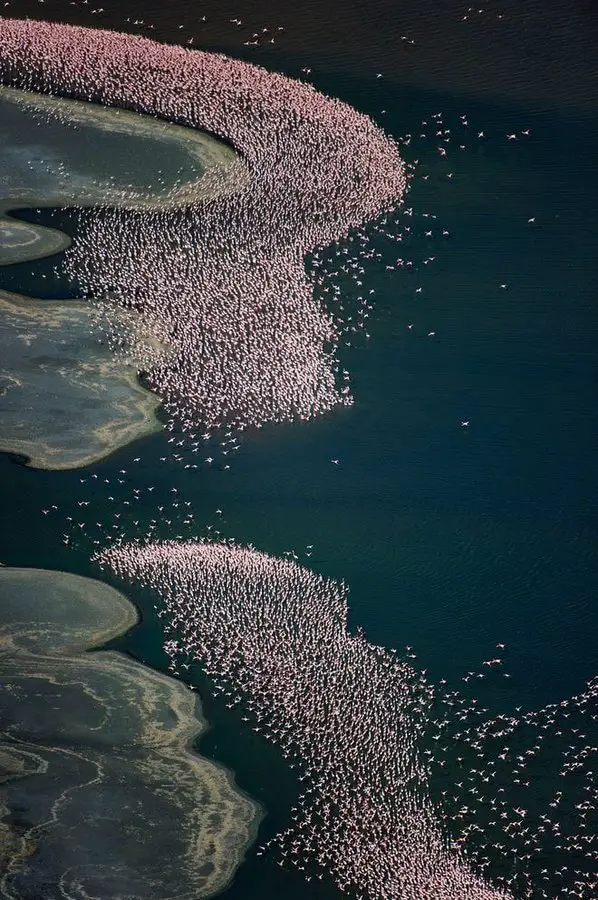There is a small national park “Nakuru” in Kenya, and in it – Lake Nakuru. It is there that hundreds of thousands of pink flamingos nest year after year. The abundance of algae attracts other birds to this place. But flamingos are a special conversation. It is their huge flocks that make tourists come from all over the world to enjoy the spectacle.
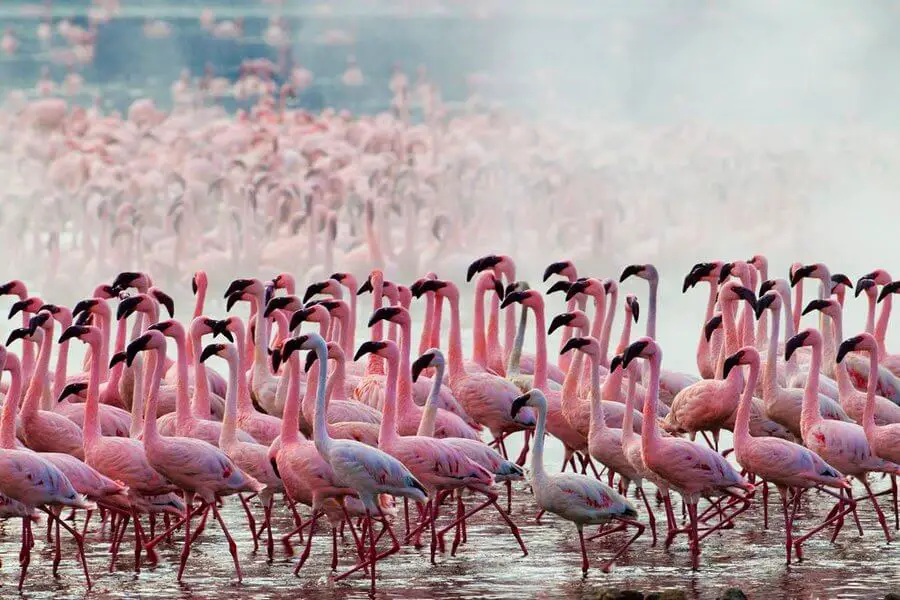
In the language of the local Maasai tribes, the word “nakuru” means “dusty place.”
Flying over the lake by helicopter will take your breath away from what you see – a huge pink blanket sways tirelessly over the lake. On the banks of the “Nakuru” up to one and a half million birds can gather at once.
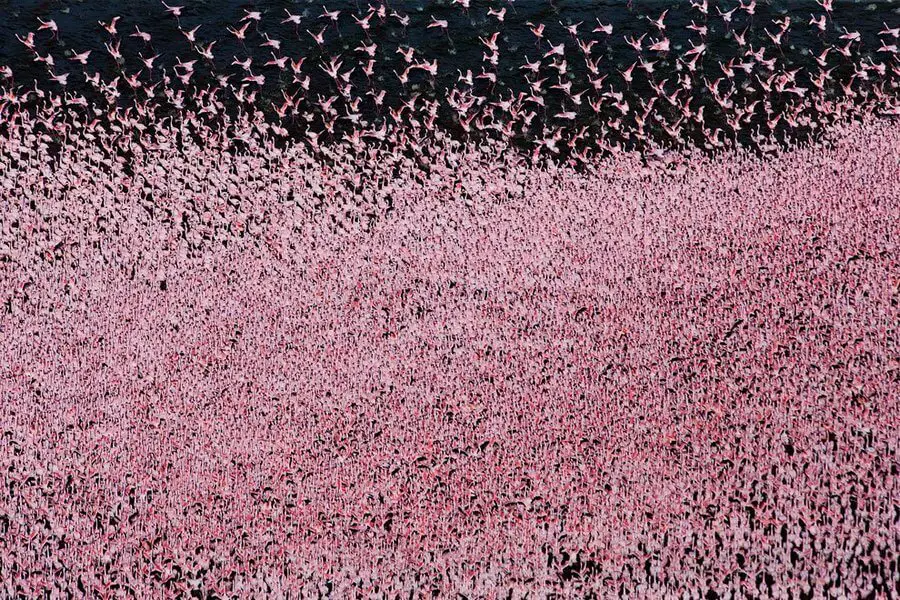
Nowhere else on earth will you meet so many long-legged pink beauties.
Other names for flamingos are “bird of fire” and “bird of the morning dawn.” And in one of the songs, it was sung that the flamingo is a “child of the sunset.”
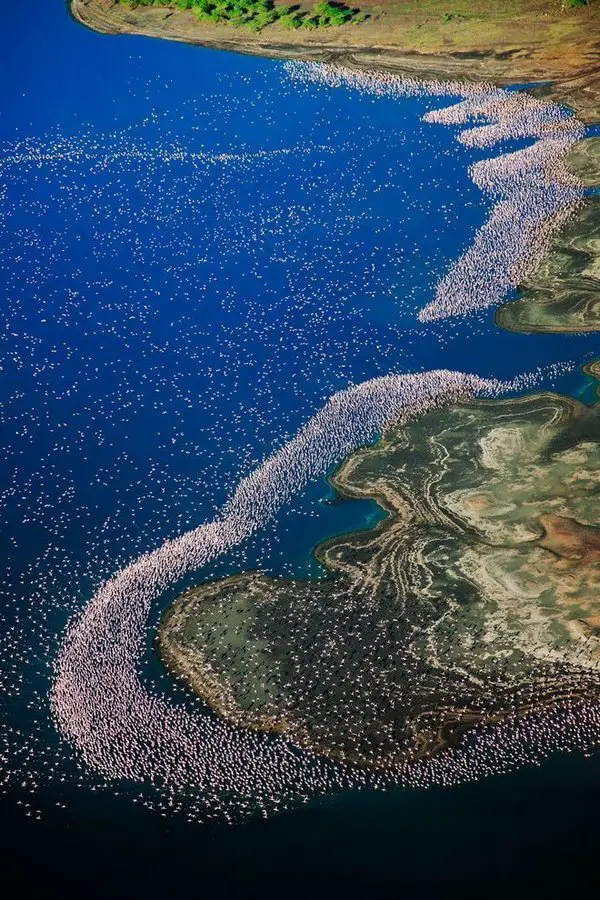
Birds feel great in this place and all thanks to a large number of small crustaceans and algae that live in shallow waters.
A distinctive feature of flamingos is a huge beak curved almost at a right angle. With it, they filter food out of the water.
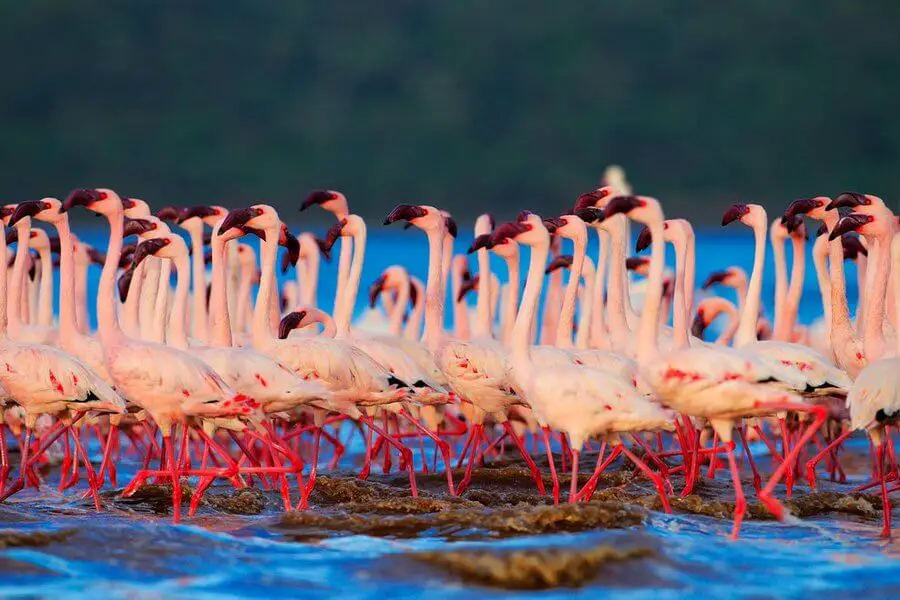
Birds open their beak, lower it into the water and drive it from side to side. Special plates located along the edges of the tongue trap small crustaceans and algae.
The characteristic easily recognizable color of the plumage is given by a special pigment, which birds receive from the shells of lacustrine crustaceans.
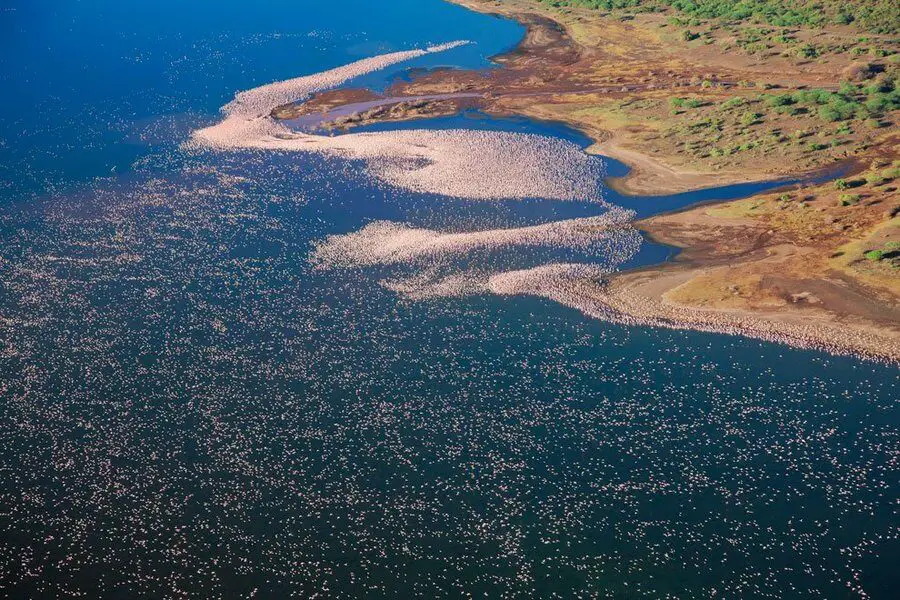
Lake Nakuru has a fairly high salt concentration. Very few living organisms are able to withstand its effect on the body. In this case, it’s a flamingo. This fact was admired by Charles Darwin.
Birds do not like to fly. Basically, they stand on the ground, and take off only in case of danger or to move to another place.
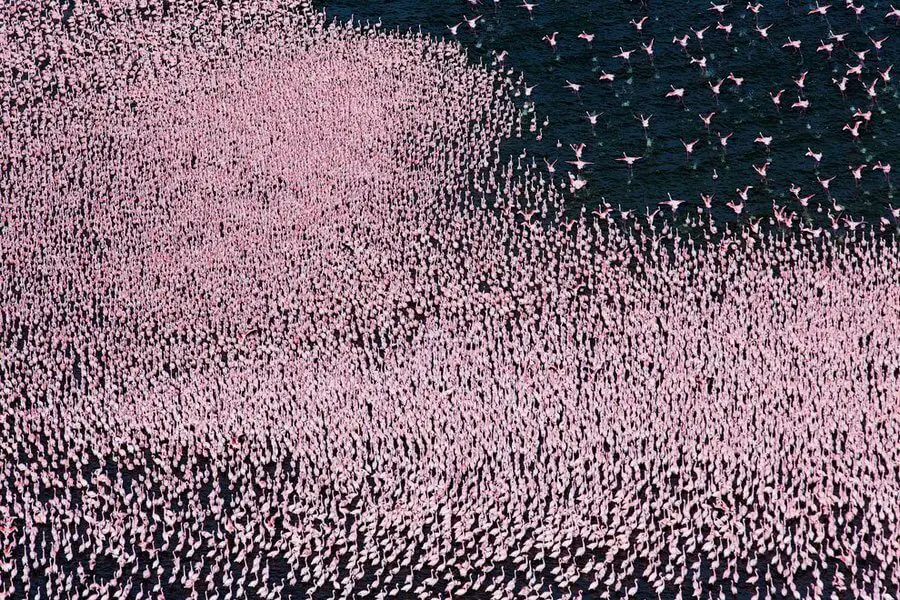
Natural enemies of flamingos are wolves, foxes, jackals, and large birds of prey, which, by the way, prefer to settle nearby.
However, catching flamingos is not easy. As soon as several birds succumb to the survival instinct and take off, their relatives immediately rush after them. It is not easy for any predator to choose any specific prey from such a living canvas.
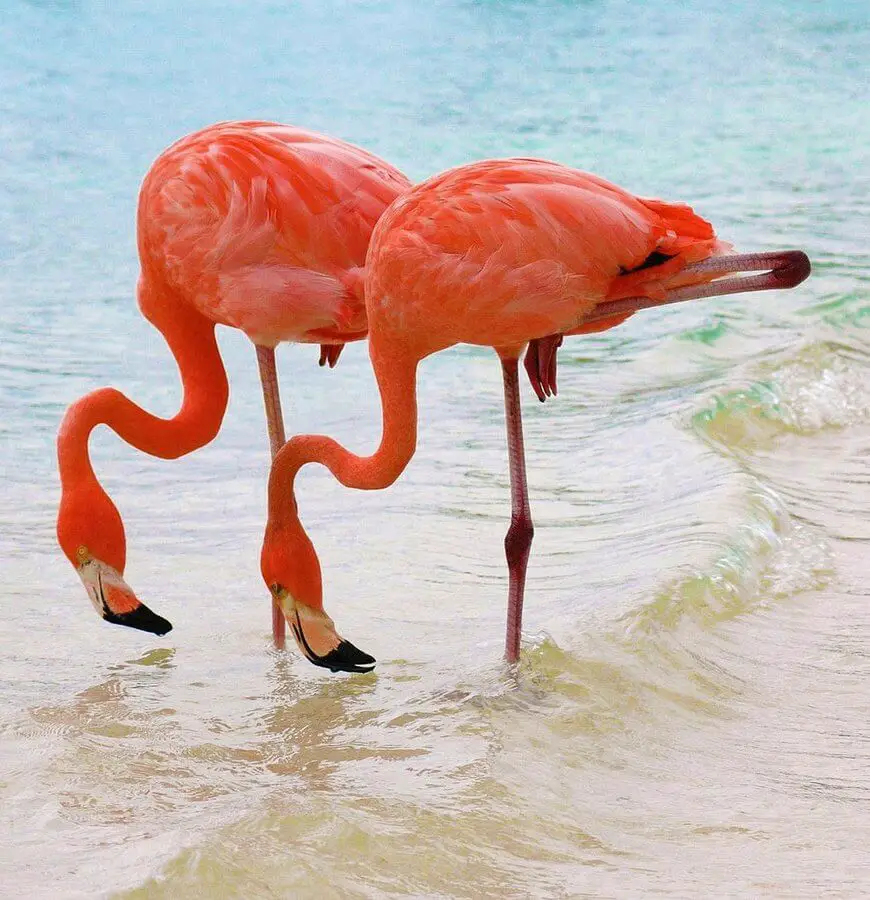
Flamingos are always depicted standing on one leg. I wonder why? It’s pretty simple. So they try to minimize heat loss, which they have through their bare feet. Storks and other long-legged birds behave the same way.
From the point of view of a person, standing on one leg is extremely uncomfortable. But this position does not cause any inconvenience to birds. The special structure of the legs helps each of them withstand the weight of the body and not bend under its weight.
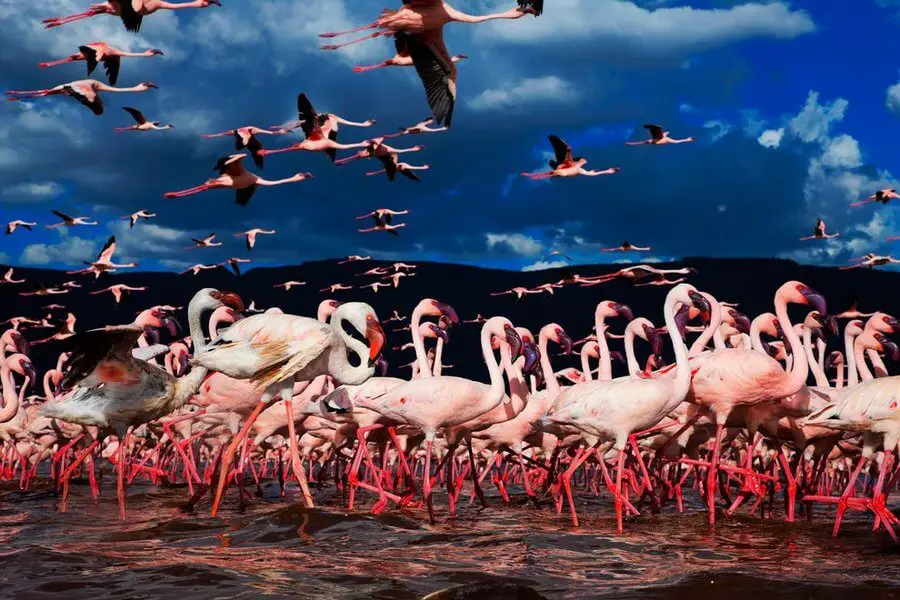
In captivity, flamingos are able to live up to 30 years of age. How long they live in nature is not known for certain. Nevertheless, they have adapted well to life in not the easiest conditions. And they have not even changed much over the past 30 million years, as evidenced by the skeletons found by archaeologists.
